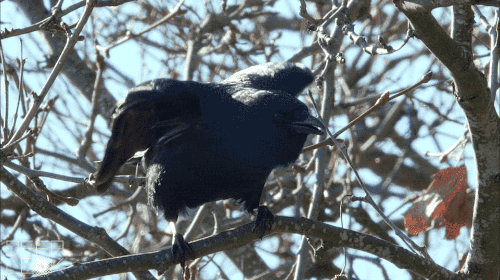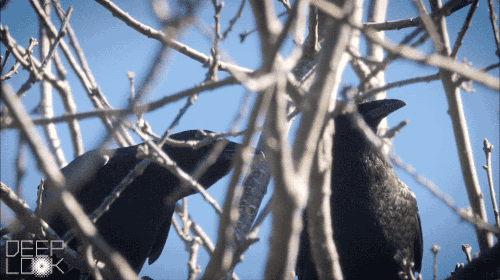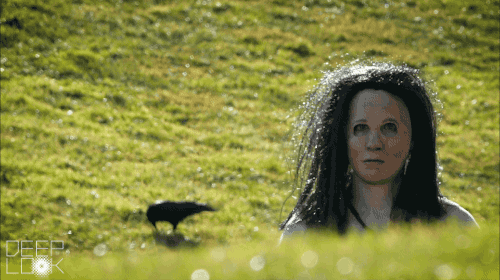You've Heard of a Murder of Crows. How About a Crow Funeral?
It’s a common sight in many parks and backyards: Crows squawking. But groups of the noisy black birds may not just be raising a fuss, scientists say. They might be holding a funeral.
Kaeli Swift, a Ph.D. candidate at the University of Washington’s Avian Conservation Laboratory in Seattle, is studying how crows learn about danger from each other and how they respond to seeing one of their own who has died.
Unlike the majority of animals, crows react strongly to the death of a fellow member of their species, mobbing together and raising a ruckus.
Only a few animals, such as whales, elephants and some primates, have such strong reactions.
To study exactly what may be going on, Swift developed an experiment that involved exposing local crows in Seattle neighborhoods to a dead taxidermied crow in order to study their reaction.

“It’s really incredible,” she said. “They’re all around in the trees just staring at you and screaming at you.”
Swift calls these events “crow funerals,” and they are the focus of her research.
She began by going to the same location in a local park or neighborhood for a few days, leaving piles of peanuts for the crows.

But on the fourth day, she showed up looking very different. Wearing a mask and wig, she held a dead crow, preserved through taxidermy.
The first crow that spotted her let out an alarm call, a series of loud repetitive scolds.
Within seconds, all of the crows within earshot mobbed together to join in the alarm-calling. The cacophony of caws emanating from the surrounding trees was impossible to ignore.
“Anytime you have a group of over 20 birds screaming at you, it’s intimidating,” Swift said. “It doesn’t get old.”
And then, after a few minutes, the crows quieted down and dispersed. The results have played out over and over during different experiments in various locations. The whole chaotic reaction takes only a few minutes, but in that time the crows have learned some important information that they won’t soon forget.
During her experiments, on the second day Swift would return without the mask, wig or dead crow. She provided piles of peanuts again, but this time the crows were much more cautious, taking longer to approach and looking quite wary.

Swift believes that the crows remembered the experience with the mask and dead crow and now connected the area with danger.
She would return again the next day with the mask, but without the dead crow or peanuts.
The crows reacted strongly, mobbing together and cawing at Swift even though she was no longer carrying the dead crow.
Even when she was empty-handed, they recognized the masked Swift as a threat. Weeks later, the crows continued to react to the mask.
And here’s what Swift said makes that really interesting: These new mobs contained crows that had never seen the masked Swift with the dead crow. But they still learned to avoid the masked figure.
Learning directly from each other, rather than through individual experience, is called social learning.
“By participating in these funerals, crows can get information about new dangers without taking the risk,” Swift said.

She published her findings in a 2015 article in the journal Animal Behaviour. But she’s not done yet.
While her initial study focused on why crows are drawn to their dead compatriots, she has now switched her focus to look at how crows’ reactions to seeing dead crows change under different circumstances.
“For example, are they attentive to the dead crows’ age?” Swift said. “Does having an active nest or young kids affect the intensity of their response?”
She also wants to see if crows engage in tactile interactions with their dead — the way that some mammals, like primates and elephants, do.

Bystanders in the parks and neighborhoods she visits take notice of the creepy mask, too.
“People are either extremely alarmed or they know about the University of Washington experiments and are excited,” she said.
Few wild animals have as close a relationship with people as crows do. And in the thousands of years we’ve spent living in close proximity to one another, crows and humans have learned a few things about each other.
“If you step back and examine how distantly related crows are from us, and our closest mammalian relatives, you start to see how striking this shared interest in our dead is,” said Swift. “It’s a chance to unlock deep mysteries about the evolution of our own funeral rites, and appreciate how much we share with our black cloaked companions, even if they look nothing like us.”
